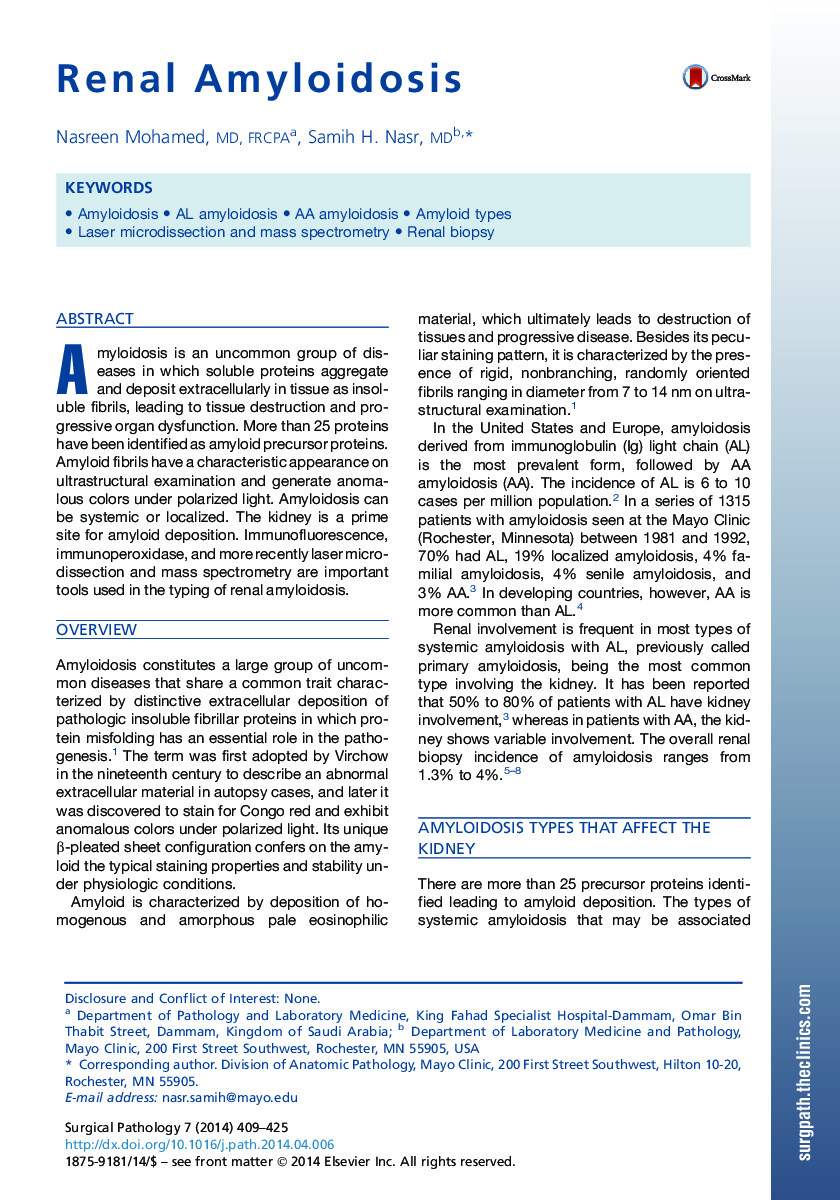| Article ID | Journal | Published Year | Pages | File Type |
|---|---|---|---|---|
| 3334430 | Surgical Pathology Clinics | 2014 | 17 Pages |
Abstract
Amyloidosis is an uncommon group of diseases in which soluble proteins aggregate and deposit extracellularly in tissue as insoluble fibrils, leading to tissue destruction and progressive organ dysfunction. More than 25 proteins have been identified as amyloid precursor proteins. Amyloid fibrils have a characteristic appearance on ultrastructural examination and generate anomalous colors under polarized light. Amyloidosis can be systemic or localized. The kidney is a prime site for amyloid deposition. Immunofluorescence, immunoperoxidase, and more recently laser microdissection and mass spectrometry are important tools used in the typing of renal amyloidosis.
Related Topics
Health Sciences
Medicine and Dentistry
Hematology
Authors
Nasreen MD, FRCPA, Samih H. MD,
